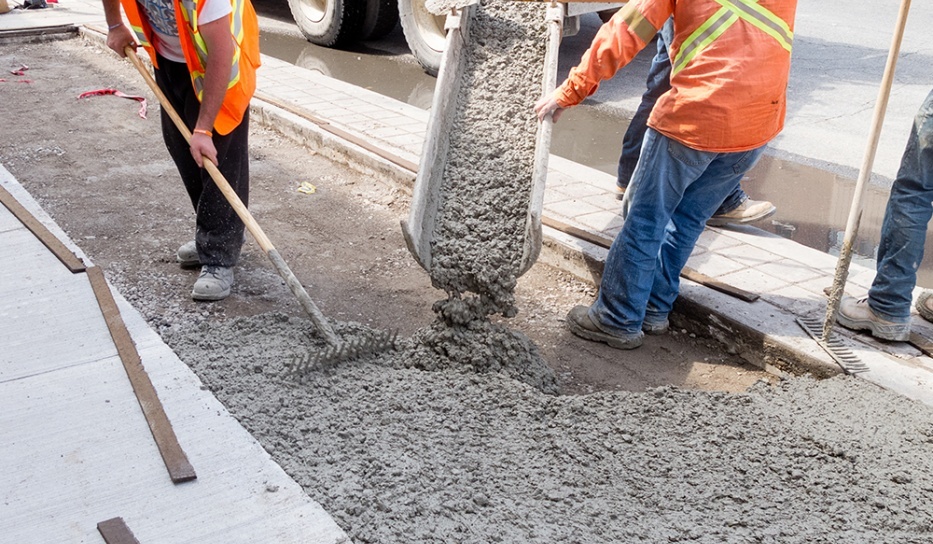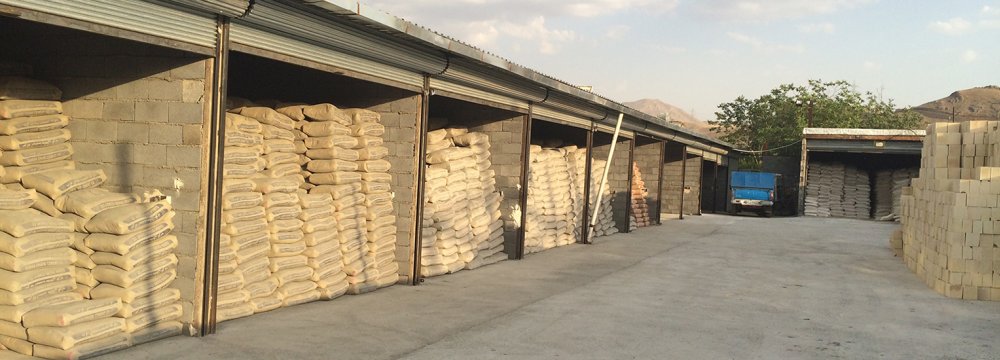
Government Control Hamstrings Cement Industry

And the private sector, touted as the voice of free market challenging the governmental narrative, is mostly used as a sidekick to add color to official speeches for wooing investors.
What this implies is that the fate and performance of domestic industries depend on governmental planning. This could potentially be a good thing if the planning is sound, but more often than not, paradoxes and contradictions proliferate, prompting even officials to voice concerns.

“The cement industry is struggling with a near 40% overcapacity and yet we plan to boost capacity by another 50% in the next 10 years?” asked the Minister of Roads and Urban Development Abbas Akhoundi during Iran Cementex 2017.
Akhoundi addressed the gathering after deputy minister of industries, mining and trade, Jafar Sarqeyni, spoke right before him on industrial development plans.
“In the early 90s [when the cement industry was growing], we were concerned we might be hit by overcapacity, and now it is here and we are aiming to further boost supply. This is the same old story,” he said.
The Ninth Int’l Exhibition of Cement and Concrete Manufacturing Technologies and Related Machineries, which opened in Tehran in mid-January, was attended by top-ranking government officials and industry players.
According to the head of Fars and Khuzestan Cement Company, Morteza Lotfi, domestic cement production capacity currently stands at 80 million tons per year.
Real output is forecasted to reach 50 million tons by the yearend (March 20) and the 30-million-ton excess capacity is proving a costly burden for the industry.
The industry is also in hot waters, as faltering domestic demand and loss of key export destinations have caused tons of cement to pile up in warehouses. Plants have a hard time marketing their products.
The Ministry of Industries, Mining and Trade has set the target for domestic cement output over the next decade to reach 120 million tons. Exports are stipulated to rise 68% to reach 32 million tons.
Iran is currently the world’s seventh largest cement producer after it dropped three steps last year due to lower production.
Production stood at 58.6 million tons in 2015, down 12% year-on-year, according to Cement Employers Association data.
Trouble on Both Sides of Border
Before the ongoing slump hit the sector, Iranian cement producers experienced a seven-year boom period owing to the ill-famed Mehr Housing Scheme–a large-scale construction program initiated in 2007 by the previous administration to provide two million low-income people with housing units through free land and cheap credit.
The program buoyed demand for all construction materials and prompted unrestrained capacity-making by the government. Its progress slowed down, however, due to lack of funding, which dragged down domestic demand for construction materials in turn.
Cement manufacturers were forced to turn to exports to make use of the increased production capacities developed during the boom years.
This is while high transportation costs prevent cement exporters from seeking new foreign markets that have traditionally been limited to neighboring countries such as Iraq, Afghanistan, Pakistan and Azerbaijan.
At the same time, heavyweight regional producers, such as Turkey, pose a challenge to the expansion of Iranian export destinations.
For years, Iraq was the main destination for Iranian cement and clinker–the raw material used in the first stage of cement manufacturing. The neighboring country once used to account for nearly 65% of Iran’s overseas cement shipments. However, since 2015, the rise of IS terrorist group in Iraq, besides falling oil prices, reduced demand for cement in the country.
Further exacerbating the situation, the Iraqi government slapped heavy tariffs on Iranian cement and clinker imports, and eventually banned it in 2015, citing poor quality as well as dumping on the part of Iranian producers.
After extensive talks with Iraqi officials, the ban was lifted but the volume of shipments diminished markedly, as Iranian officials imposed an export quota on the commodity to both monitor cement quality and supply.
More than 15 million tons of cement and clinker were exported from Iran in the last Iranian year (ended March 19, 2016), with Iraq accounting for close to 65% of the figure.
Exporters have yet to find new markets to replace Iraq while the government has yet to provide them with the $285.7 million in transportation subsidies it promised back in August. The subsidy was meant to help exporters find new destinations such as Africa.
“Prices are still depressed and we still haven’t heard about any transportation subsidies to new markets,” said Efris Frounchi, an official of Ilam Cement Company.
The Plight of Market Manipulation
The Iranian government has a heavyhanded way of intervening in market dynamics. Steelmakers and iron ore producers recently got a taste of it, as they are struggling with fluctuations in import and export tariffs. Cement producers, however, are an old victim.
According to CEA secretary, Abdolreza Sheikhan, ever since the cement industry’s inception in Iran, the government has set the prices and they have stayed the same for the past three years.
This makes Iranian cement one of the cheapest in the world–about $35 per ton, Financial Tribune’s sister publication Tejarat-e-Farda economic weekly reported.
Industry players believe that the sector can thrive if the government leaves market dynamics to be set by the market forces. However, this requires the Iranian private sector to stop relying on governmental subsidies and financial packages, and calls for the government to be a policymaker and not a market player.


Trump weighs using $2 billion in CHIPS Act funding for critical minerals

Codelco cuts 2025 copper forecast after El Teniente mine collapse

Electra converts debt, launches $30M raise to jumpstart stalled cobalt refinery

Barrick’s Reko Diq in line for $410M ADB backing

Abcourt readies Sleeping Giant mill to pour first gold since 2014

Nevada army depot to serve as base for first US strategic minerals stockpile

SQM boosts lithium supply plans as prices flick higher

Viridis unveils 200Mt initial reserve for Brazil rare earth project

Tailings could meet much of US critical mineral demand – study

Kyrgyzstan kicks off underground gold mining at Kumtor

Kyrgyzstan kicks off underground gold mining at Kumtor

KoBold Metals granted lithium exploration rights in Congo

Freeport Indonesia to wrap up Gresik plant repairs by early September

Energy Fuels soars on Vulcan Elements partnership

Northern Dynasty sticks to proposal in battle to lift Pebble mine veto

Giustra-backed mining firm teams up with informal miners in Colombia

Critical Metals signs agreement to supply rare earth to US government-funded facility

China extends rare earth controls to imported material

Galan Lithium proceeds with $13M financing for Argentina project

Kyrgyzstan kicks off underground gold mining at Kumtor

Freeport Indonesia to wrap up Gresik plant repairs by early September

Energy Fuels soars on Vulcan Elements partnership

Northern Dynasty sticks to proposal in battle to lift Pebble mine veto

Giustra-backed mining firm teams up with informal miners in Colombia

Critical Metals signs agreement to supply rare earth to US government-funded facility

China extends rare earth controls to imported material

Galan Lithium proceeds with $13M financing for Argentina project

Silver price touches $39 as market weighs rate cut outlook

















